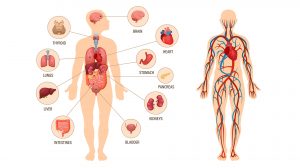Definition
noun
A membrane enzyme that allows the diffusion of protons (hydrogen ions) through its proton channel component while using the energy released from the proton gradient to produce ATP this time through its synthase domain.
Supplement
This enzyme is present in bacterial cell membrane, in inner mitochondrial membrane, and in thylakoid membrane in chloroplasts.
It consists of two major segments: Fo portion, the transmembrane proton channel and F1 portion, the synthase domain. The proton channel component allows the diffusion of protons (hydrogen ions) from an area where there are more hydrogen ions to an area where there are less hydrogen ions due to a proton gradient. As the proton (H+ ion) moves down the concentration gradient this moves the enzyme in a spinning motion, which brings ADP and inorganic phosphate together to form a bond, thus creating ATP molecule. The resulting ATP molecule is released so that a new ADP molecule can enter for another phosphorylation.
See also: chemiosmosis
Dictionary > Hydrogen-transporting ATP synthase
You will also like...

Photosynthesis – Photolysis and Carbon Fixation
Photosynthesis is the process that plants undertake to create organic materials from carbon dioxide and water, with the ..

The Human Physiology
Physiology is the study of how living organisms function. Thus, human physiology deals specifically with the physiologic..

Sigmund Freud and Carl Gustav Jung
In this tutorial, the works of Carl Gustav Jung and Sigmund Freud are described. Both of them actively pursued the way h..

Genetic Control – On and Off Genes
Genes are the blueprint of our bodies, a blueprint that creates a variety of proteins essential to any organism's surviv..

Lotic Communities & Animals
A running water environment offers numerous microhabitats for many types of animals. Similar to plants, animals in lotic..

Plant Metabolism
Plants are responsible for incredible feats of molecular transformation. Plant processes, such as photosynthesis, photop..

